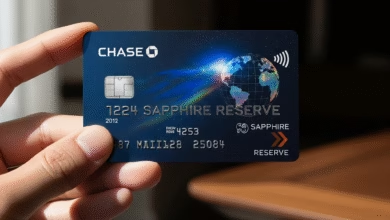Find out what a Black Card is and how to get one
Complete and detailed guide to black cards

The term “Black Card” often conjures images of exclusivity and luxury. While it has become a popular phrase, understanding what it truly represents and how one can obtain such a prestigious premium credit card requires a closer look. This guide will demystify the Black Card and outline the typical path to acquiring one of these coveted pieces of plastic.
1. Demystifying the Black Card: Understanding Exclusive Credit Cards

The original “Black Card” is officially known as the American Express Centurion Card. Introduced in 1999, it wasn’t publicly advertised and was initially offered by invitation only to a select clientele of American Express cardholders with exceptionally high spending and excellent payment history.
- Beyond the Name: While other financial institutions might offer cards with a black aesthetic, the term “Black Card” is often colloquially used to refer to any high-end credit card with premium benefits and stringent eligibility requirements.
- Exclusivity and Status: The allure of a Black Card lies in its exclusivity and the perception of status it conveys. It signals a high level of financial success and often comes with personalized services and unique perks.
It’s important to distinguish the original American Express Centurion Card from other black-colored premium cards offered by various banks. While they might share some characteristics, the Centurion Card remains the benchmark for exclusivity.
2. What Makes a Card a “Black Card”?: Key Features of Luxury Credit Cards
While specific features vary between issuers, “Black Cards” and other premium rewards cards typically offer a range of exclusive benefits:
- Exceptional Rewards Programs: Often featuring higher rewards rates on spending, bonus points in various categories, and flexible redemption options for travel, merchandise, or cash back.
- Premium Travel Benefits: This can include airport lounge access (often through programs like Priority Pass), elite status with airlines and hotels, travel insurance, car rental privileges, and dedicated travel concierge services.
- Personalized Concierge Services: A hallmark of many high-tier credit cards, offering assistance with travel arrangements, dining reservations, event tickets, and other personalized requests.
- Exclusive Event Access: Invitations to private events, experiences, and opportunities not available to the general public.
- Enhanced Purchase Protection and Insurance: Superior coverage for purchases, including extended warranties, purchase protection against damage or theft, and return protection.
- No Pre-Set Spending Limit (NPSL): While not a license to unlimited spending, NPSL cards don’t have a strict credit limit, with spending capacity evaluated on a case-by-case basis.
These features are designed to cater to the needs and lifestyles of high-net-worth individuals who value convenience, luxury, and personalized service.
3. The Invitation-Only Approach: How to Get on the Radar for a Centurion Card

The American Express Centurion Card is not something you can simply apply for. The primary way to obtain one is through an invitation from American Express. While the exact criteria are not publicly disclosed, common factors include:
- Significant Spending: Consistently high spending on existing American Express cards over a sustained period. Reports suggest annual spending in the hundreds of thousands of dollars.
- Excellent Payment History: A flawless record of on-time payments and responsible credit management with American Express.
- Long-Term Card Membership: Being a loyal and long-standing American Express customer.
There’s no guaranteed path, but demonstrating high spending and responsible credit behavior with American Express is generally considered the primary way to become a potential invitee.
4. Beyond Invitation: Exploring Other High-End Credit Card Options
While the Centurion Card remains the most iconic, other financial institutions offer premium credit cards with similar (though potentially less exclusive) benefits that you can directly apply for if you meet their requirements. These might include:
- Chase Sapphire Reserve: Known for its travel rewards and perks.
- Capital One Venture X Rewards Credit Card: Offers strong travel rewards and lounge access.
- Citi AAdvantage Executive World Elite Mastercard: Geared towards American Airlines loyalists.
These cards typically have high annual fees and stringent credit score and income requirements, but they offer valuable rewards and benefits for frequent travelers and high spenders.
5. Meeting the Eligibility Criteria: What Banks Look For in Premium Cardholders

Whether you’re aiming for an invitation or applying for another elite credit card, banks generally look for the following:
- Excellent Credit Score: A FICO score typically in the “Excellent” range (750 or higher) is almost always required.
- High Income: Demonstrable high annual income to support significant spending. Specific income requirements vary by issuer.
- Significant Net Worth: In some cases, banks may consider your overall financial assets.
- Strong Banking Relationship: A history of responsible financial management with the issuing bank can be beneficial.
Meeting these criteria signifies to the bank that you are a financially stable and reliable customer who will likely utilize the card’s benefits and generate significant transaction volume.
6. The Costs Associated with Exclusivity: Understanding Black Card Fees
“Black Cards” and other premium cards typically come with significant fees:
- High Annual Fees: The American Express Centurion Card reportedly has an initiation fee and an annual fee, both in the thousands of dollars. Other premium cards also have substantial annual fees, often ranging from a few hundred to over a thousand dollars.
- Potential for Other Fees: While less common with these elite cards, it’s still important to be aware of potential fees for things like foreign transactions or cash advances.
The high fees are often justified by the extensive benefits and personalized services offered. However, it’s crucial to assess whether the value of these perks outweighs the costs for your individual spending and lifestyle.
7. Is a “Black Card” Right for You?: Evaluating the Value Proposition of Luxury Cards

Ultimately, the value of a “Black Card” or any high-end credit card depends on your individual financial situation and lifestyle. Consider the following:
- Your Spending Habits: Do you spend enough to justify the rewards and potentially offset the annual fee?
- Your Travel Frequency: Would you significantly benefit from the travel perks like lounge access and elite status?
- Your Need for Personalized Services: Would you utilize a concierge service for travel and other arrangements?
- Your Financial Capacity: Can you comfortably afford the annual fee and maintain a responsible payment history with a high-limit card?
For some individuals, the exclusive benefits and personalized service of a “Black Card” are well worth the cost. For others, more accessible premium cards or even standard rewards cards might offer a better value proposition. Understanding your own needs and financial habits is key to determining if pursuing a “Black Card” aligns with your financial goals.





